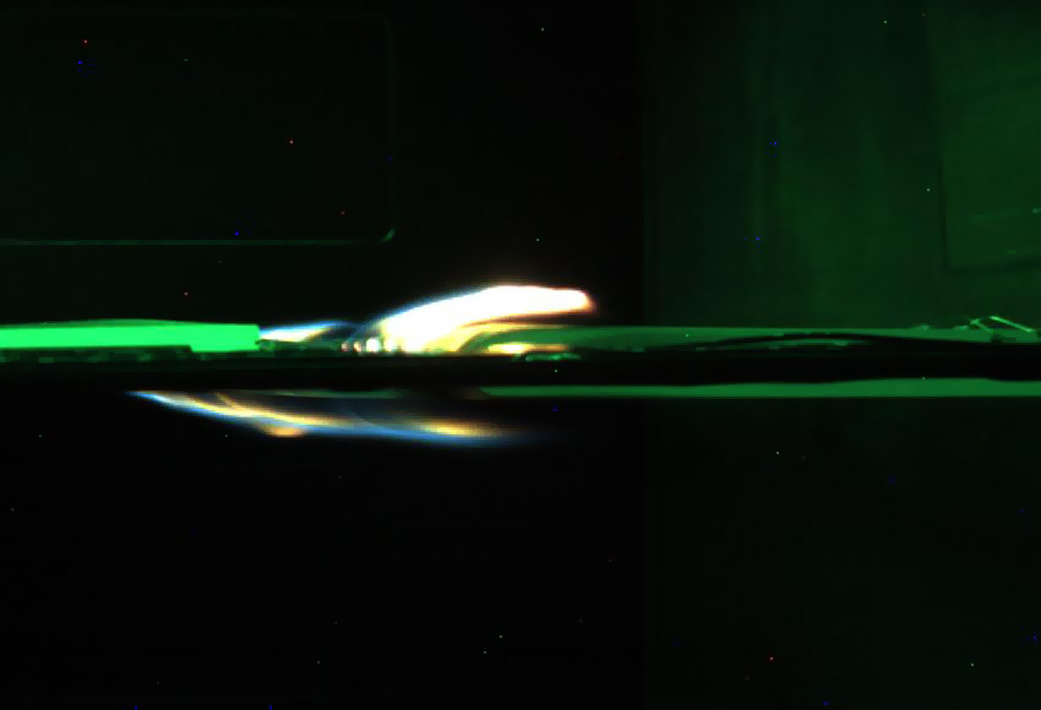NASA lit a fire in space to keep future astronauts safe (video)
NASA deliberately set a fire in a spacecraft to see if a "smoke eater" and carbon dioxide scrubber could make future moon missions safer for astronauts.
The experiment, called Spacecraft Fire Safety Demonstration Project IV, or Saffire IV, continues a research program aimed at better understanding how fire behaves in space. There are six experiments planned in all, with each iteration taking place inside a cargo spacecraft, Cygnus, made by Northrop Grumman. This latest Saffire experiment focused on testing prototype equipment that could be used on Orion spacecraft bound for the moon, where NASA wants to land astronauts in 2024 under the Artemis program.
NASA hires Cygnus capsules to send experiments, food and other necessities to astronauts on the International Space Station. Since the unoccupied spacecraft is deliberately destroyed in Earth's atmosphere after each mission, it presents an ideal platform to test how fire ignites, grows and spreads in space. Investigators wait until Cygnus is a safe distance from the orbiting laboratory, then light the flame while the spacecraft heads for its demise.
Related: International Space Station at 20: A photo tour
"We want to take what we learned from the first three Saffire experiments and see how flames spread and grow in other spacecraft conditions," Gary Ruff, Saffire project manager at NASA's Glenn Research Center in Cleveland, said in a statement. "We also loaded Saffire IV with more diagnostic equipment to see how effectively we can detect fires, measure combustion products, and evaluate future fire response and clean-up technologies."
The Saffire IV experiment was built by Zin Technologies Inc. in Cleveland and surrounded Cygnus' cabin with sensors. These devices monitored oxygen and carbon dioxide levels, air temperatures, smoke concentration and the diameter of the smoke plume. The experiment also included four cameras to watch how the flame grew and spread. In addition to the flame itself, the experiment tested a filter nicknamed a "smoke eater."
Although Saffire IV's results are still being analyzed, NASA released a preliminary video showing a special kind of cloth made of cotton and fiberglass burning and glowing after fire spread through it. The results from this latest experiment, which had longer and stronger flames, will be compared to previous Saffire iterations.
Breaking space news, the latest updates on rocket launches, skywatching events and more!
Those earlier experiments started smaller fires that quickly reached a steady size, according to the NASA statement. (Fires on Earth, in contrast, usually grow for longer periods of time.) The spacecraft's size also affected the fire experiments more than scientists had predicted.
The next two Saffire experiments are scheduled for October 2020 and March 2021. Overall, the experiments are designed to teach spaceflight experts how to avert catastrophe when crews are far from Earth and can't evacuate a capsule should flames take hold.
- Virtual reality project shows life and science on the space station
- Astronaut says it 'smells great' inside the International Space Station (video)
- The big science of NASA astronaut Christina Koch's near-year in space in photos
Follow Elizabeth Howell on Twitter @howellspace. Follow us on Twitter @Spacedotcom and on Facebook.
OFFER: Save 45% on 'All About Space' 'How it Works' and 'All About History'!
For a limited time, you can take out a digital subscription to any of our best-selling science magazines for just $2.38 per month, or 45% off the standard price for the first three months.

Elizabeth Howell (she/her), Ph.D., was a staff writer in the spaceflight channel between 2022 and 2024 specializing in Canadian space news. She was contributing writer for Space.com for 10 years from 2012 to 2024. Elizabeth's reporting includes multiple exclusives with the White House, leading world coverage about a lost-and-found space tomato on the International Space Station, witnessing five human spaceflight launches on two continents, flying parabolic, working inside a spacesuit, and participating in a simulated Mars mission. Her latest book, "Why Am I Taller?" (ECW Press, 2022) is co-written with astronaut Dave Williams.


